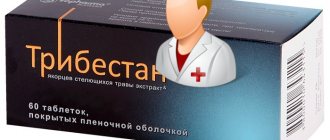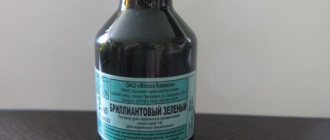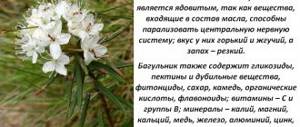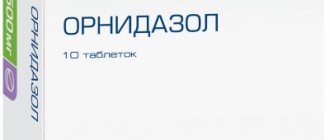Adonis bromine belongs to the group of sedative drugs . Available in the form of round, biconvex tablets of light yellow color. Tablets can be packaged in dark glass jars or placed in contour cell plates. The manufacturer of the drug is Belarusian.
You can buy Adonis bromine at a pharmacy without presenting a prescription, but before taking the product, consulting a doctor is required.
The main components of the drug Adonis bromine are adonis extract and potassium bromide. Thanks to these components, the drug has moderate cardiotonic and sedative effects.
Adonis has been used in medicine for several centuries. People have long noted its ability to increase systole (tension of the heart muscle), lengthen diastole (the relaxation phase of the heart muscle), increase the stroke volume of the heart (the amount of blood pushed into the bloodstream per contraction) and at the same time have a calming effect on the central nervous system.
Potassium bromide has a pronounced calming effect, has a beneficial effect on increased irritability, insomnia, vegetative-vascular dystonia, and heart failure.
Adonis bromine is prescribed for the treatment of a number of diseases of the cardiovascular and nervous system . In addition, it is indicated for use by those who suffer from neurotic syndrome, accompanied by increased heart rate.
The drug contains substances that have a tonic effect on the vagus nerve, which helps normalize the heart rate.
Adonis bromine has a diuretic (diuretic) effect, which effectively fights edema that accompanies some diseases of the heart and blood vessels.
In some cases, when there is a risk of developing diseases of the central nervous or cardiovascular system and there are certain prerequisites for this, doctors prescribe the drug Adnis bromine for prophylactic purposes.
When treating a disease such as neurocirculatory dystonia, Adonis bromine is also usually prescribed, in combination with other medications.
Description
Sedatives (from Latin sedatio
- sedation) - drugs that have a general calming effect on the central nervous system. The sedative (calming) effect manifests itself in a decreased response to various external stimuli and a slight decrease in daily activity.
Drugs in this group regulate the functions of the central nervous system, enhancing inhibition processes or reducing excitation processes. As a rule, they facilitate the onset and deepen natural sleep, enhance the effect of hypnotics, analgesics and other central nervous system depressants.
Sedatives include bromine preparations - sodium bromide and potassium bromide, camphor bromide, as well as preparations made from medicinal plants (valerian, motherwort, passionflower, peony, etc.).
Bromides began to be used in medicine a long time ago, back in the 19th century. The effect of bromine salts on higher nervous activity was studied in detail by I.P. Pavlov and his students in experimentally induced neuroses in dogs, as well as in healthy animals.
According to school data I.P. Pavlov, the main effect of bromides is associated with the ability to concentrate and enhance inhibition processes in the cerebral cortex, restoring the disturbed balance between the processes of inhibition and excitation, especially with increased excitability of the central nervous system. The effect of bromides depends on the type of higher nervous activity and the functional state of the nervous system. Under experimental conditions, it has been shown that to obtain the same therapeutic effect, animals with a weak type of nervous activity require smaller doses of bromides than animals with a strong type of nervous activity. In addition, as a rule, the less severe the functional disorders in the cerebral cortex, the smaller the doses required to correct these disorders.
The dependence of the magnitude of therapeutic doses of bromides on the type of nervous activity has also been confirmed in the clinic. In this regard, it is necessary to take into account the type and condition of the nervous system when selecting an individual dose.
Bromine preparations are used for various neurotic disorders as sedatives. Bromides also have anticonvulsant activity, but they are currently used very rarely as antiepileptic drugs (see Antiepileptic drugs).
It should be borne in mind that a feature of bromine salts is their slow elimination from the body (the concentration in the blood plasma is reduced by half after about 12 days). Bromides accumulate in the body and can cause chronic poisoning (bromism), manifested by general lethargy, apathy, memory impairment, and the appearance of a characteristic skin rash (acne bromica)
, irritation and inflammation of the mucous membranes, etc.
In medicine, preparations obtained from medicinal raw materials - rhizomes and roots of valerian, flowering tops of motherwort grass, shoots with leaves of passionflower grass, etc. - have long been widely used. The effect of herbal products is due to the essential oils, alkaloids, etc. they contain.
Valerian preparations contain essential oil consisting of esters (including borneol alcohol and isovaleric acid), borneol, organic acids (including valeric), as well as some alkaloids (valerin and hatinin), tannins, sugars etc. Valerian has a moderate sedative effect, enhances the effect of sleeping pills, and also has antispasmodic properties.
The main biologically active substances included in motherwort preparations are flavonol glycosides, essential oils, low-toxic alkaloids, saponins, and tannins.
There are combination drugs (Validol, Valocordin, etc.) that contain various sedatives.
Despite the availability of modern tranquilizers, sedatives continue to be widely used in medical practice. The main indications for prescribing sedatives are increased nervous excitability, irritability, vegetative-vascular disorders, sleep disorders, neuroses (at the beginning of treatment), incl. cardioneuroses, neurosis-like conditions. Compared with anxiolytics and hypnotics, especially benzodiazepine derivatives, sedatives (especially herbal origin) have a less pronounced sedative effect, however, they are characterized by good tolerability and the absence of serious side effects (they do not cause muscle relaxation, ataxia, drowsiness, or addiction, mental and physical dependence). All this allows them to be widely used in everyday outpatient practice.
Previously, magnesium sulfate was used as a sedative, which has different pharmacological effects on the body depending on the method of administration. When taken orally, magnesium sulfate is poorly absorbed from the gastrointestinal tract and acts as a laxative and choleretic agent. When administered parenterally, magnesium sulfate reduces the excitability of neurons and has a depressant effect on the central nervous system (it manifests itself as a sedative, anticonvulsant, and in large doses - an anesthetic effect), and also has a myotropic antispasmodic effect. The effect on the cardiovascular system is manifested by hypotensive (predominantly high blood pressure decreases) and antiarrhythmic (with paroxysms of ventricular tachycardia of the “pirouette” type) effects.
Numerous experimental and clinical studies conducted since the mid-80s of the 20th century have proven the important role of magnesium ions in regulating the functions of the nervous, cardiovascular and other systems of the body (see Macro- and microelements). It has been shown that a lack of magnesium in the body leads to increased excitability of cells, primarily muscle and nerve cells, to metabolic disorders (energy metabolism, etc.), incl. in the central nervous system, to disruption of neuromuscular transmission, etc. It is believed that one of the effects of magnesium in the central nervous system is the regulation of neuronal excitability and inhibition of the processes of nerve impulses, which determines the inhibitory effect on the central nervous system with increased excitability of the nervous system, which manifests itself, in particular , sedative effect. Magnesium preparations, replenishing the deficiency of this cation in the body, help alleviate symptoms such as irritability, increased nervous excitability, sleep disturbances, etc.
In addition to the drugs described above, anxiolytics (see Anxiolytics), first-generation H1-antihistamines (see H1-antihistamines) and a number of drugs from different pharmacological groups have a sedative effect.
We decided to make reviews on different types of drugs so that readers understand what helps with what, what analogues there are, and what is outdated and dangerous. There is an issue on painkillers, but now we will talk about sedatives.
Stress and psychological stress are increasingly appearing in the information field. You can fight them in many ways, including meditation, tai chi, and simply a rational lifestyle. However, emergency care and medication support are often needed.
Bromine to reduce potency
Bromine to reduce potency is widely used in the armed forces to control the physiological characteristics of young recruits. You can dispute the forced use of this method, talk about the reality of its use, but, nevertheless, the influence of bromine has an effect on sexual function.
Against the backdrop of annoying advertising calling to increase sensuality by any means, some men have to look for means to reduce sexual appetite. There are plenty of reasons for this.
Military service, long business trips, the presence of heart disease, psychological discomfort due to the inability to control an erection and many other factors can force one to actively seek methods to get rid of a personal problem.
Impact on the body
In order to understand why this chemical element is used to reduce potency in men, you need to know in what processes bromine is involved in the body and how its excess and deficiency affects the functioning of the systems.
Bromine is a natural oxidizing agent and many studies have revealed its content in bone and muscle structures of the blood, as well as in the tissues of the thyroid gland and pituitary gland. Considering the effect hormones have on the state of the body, it is known that with a lack of bromine:
- Growth and development slows down significantly at a young age;
- Normal processes of brain activity change. There are also difficulties with switching attention and transition from the activity phase to the resting state;
- There are problems falling asleep;
- Blood counts decrease;
- The person becomes nervous, restless and irritable.
These characteristics of the effect of bromine on physiological processes make it possible to get rid of illusions about the use of such a “sedative” drug in the army. If there is excess saturation of bromine, the body malfunctions, which can result in problems such as:
- Poor concentration;
- Suppression of the functions of the central nervous system;
- Bleeding;
- Dizziness;
- Inflammatory skin diseases;
- Persistent decrease in erectile function and with the development of impotence.
It becomes difficult to imagine performance at a high enough level to perform effective service. The decrease in potency that many army recruits note is more associated with changes in lifestyle, nutrition and increased physical activity than with the use of chemical additives.
Taking into account the peculiarities of the army system, the fact of artificial influence should not be completely ruled out.
However, bromine drugs do affect sexual function. This occurs due to the inhibitory effect on the functions of the nervous system, inhibition of the production of thyroid and pituitary hormones. Sexual activity is directly related to the state of hormonal levels and is controlled by nerve impulses.
The sedative effect that bromine has on the body allows you to achieve a decrease in potency.
It is for this reason that the prescription of drugs containing bromine in their composition is within the competence of a qualified specialist.
Only a doctor can determine the dose and regimen in order to avoid the negative side effects of increased levels of this chemical element in the body.
Level of sexual activity
In order to successfully influence potency, it is necessary to understand what factors influence its formation and what determines the increased level of sexual activity.
- First of all, the level of potency is directly related to the production of the male sex hormone, testosterone. Its deficiency leads to the development of erectile dysfunction, decreased libido and is manifested by psychological deviations. A man’s behavior is distinguished by the appearance of character traits that are initially considered predominantly female: increased moodiness and mood swings, irritability and a tendency to hysterics may be the first signs of abnormalities at the hormonal level, unless this is related to upbringing and personality traits. These factors are evidence that bromine enters the body with food in high concentrations and you need to reconsider your diet. An increased level of the male hormone leads to increased potency and is accompanied by excessive rudeness and aggressiveness, imbalance, and a tendency to violence. It is these signs that make it possible to suspect hormonal imbalances due to the fact that bromine enters the body in insufficient quantities.
- Potency is associated with lifestyle, and especially with the quality of food. Since bromine is a fairly common chemical element in nature, its content in many food products is at a high level. Products that reduce testosterone levels are classified as junk foods. These are smoked foods, salty and sweet dishes, carbonated drinks, alcohol. Beer, which contains substances resembling plant analogues of female sex hormones, especially inhibits testosterone production. Products containing soy also have a sedative effect on the production of male hormones and suppress the manifestations of increased potency.
Under normal conditions, regulating the level of hormone production, and therefore keeping male sexuality under control, is not particularly difficult, unless it is associated with any serious disturbances in the functioning of the endocrine system.
However, in some cases where massive suppression of hypersexuality is required, medications aimed at reducing testosterone, increased potency and the associated tendency to aggressive behavior can be used.
For example, in prisons or psychoneurological hospitals, medications help keep the situation under control.
Drug groups
A decrease in the level of sexual appetite is directly related to a decrease in a number of other human potencies. By influencing hormonal, nervous and mental activity, it is possible to reduce the manifestations of increased potency.
Groups of drugs that affect erectile function:
- Synthetic hormones are analogues of natural ones, and their interaction makes it possible to influence various physiological processes. Thus, excessive production of prolactin inhibits testosterone production, therefore reducing the ability to have an erection;
- Almost all groups of antidepressants and psychotropic drugs have a depressing effect on the central nervous system, inhibiting excitation processes. For example, Nozepam. The sedative property of the drug is used to correct excessive sexual activity in a number of mental patients;
- Heart medications that affect blood pressure levels can also be used to reduce potency. At the same time, such a well-known drug as Viagra, which can increase blood flow to the genitals, was originally developed to treat a number of heart pathologies;
- Medicines containing bromine generally have an effect similar to the above groups of medicines. Often used for cardiac pathology, disorders of the digestive and nervous systems. The most famous drug from this list is Androcur or the cheaper version Adonis-Bromine, which contains bromine in its composition in an easily accessible form. They act very quickly, the effect of reducing potency will appear after just a few days of use. However, you need to understand that in addition to the effect on the sexual function of men, they have a number of other effects on the body and lead to the development of undesirable side effects if used uncontrolled. Excess weight, problems with concentration, a tendency to bronchitis, acne, the manifestation of secondary female sexual characteristics - these may be the consequences of self-administration of these medications. Therefore, in order to reduce potency, you need to either consult a doctor or fight on your own using traditional methods and self-control.
Non-drug methods
To reduce excessive sexuality, you can use safe and effective methods to control testosterone levels.
Physical activity will help burn off excess energy, and increased levels of the hormone will promote muscle growth. In this way, you can achieve a decrease in potency without resorting to medicinal methods.
Eating products from the category of male weaknesses - smoked meats and semi-finished products - will help to obtain bromine in acceptable quantities and regulate the level of potency. At the same time, you should avoid recognized aphrodisiacs so as not to provoke the development of hypersexuality.
Decoctions and infusions of some medicinal plants have a soothing and mild effect on the body. Evening tea based on mint, St. John's wort, oregano will become a pleasant relaxing ritual, will not harm your health and can be effectively used to reduce potency at any age.
Source: https://stojak.ru/potentsiya/brom-dlya-snizheniya-potentsii.html
What types of sedatives are there?
- Sedatives are the most common group of sedatives. This group includes many herbal-based drugs, combination products, bromine preparations and others. Sedative drugs are for the most part commercially available, as they have few side effects and do not affect the psyche. Sedatives reduce excitation of the central nervous system and enhance inhibition processes, which leads to a decrease in irritability, a decrease in the level of aggression, and susceptibility to external stimuli. They also act on the autonomic nervous system - they normalize heart rate, reduce or completely eliminate tremors of the limbs, reduce sweating and can even ease intestinal spasms.
- Tranquilizers (anxiolytics) are psychotropic substances used to suppress feelings of fear, anxiety, severe emotional overload and other mental disorders (Diazepam, Afobazol).
- Neuroleptics are drugs used in psychiatry. They have a very pronounced sedative effect (Haloperidol, Pipotiazine, Promazine)
- Motility medications - intended for mentally ill people to stabilize their mood (lithium salts, Lamotrigine, Carbamazepine).
Physical properties
Under normal conditions, bromine is a red-brown liquid with a sharp, unpleasant odor, poisonous, and burns upon contact with skin. Density at 0 °C - 3.19 g/cm³. The melting (solidification) point of bromine is −7.2 °C, boiling point is 58.8 °C, when boiling, bromine turns from liquid into brown-brown vapor, which irritates the respiratory tract when inhaled. The standard electrode potential Br²/Br- in an aqueous solution is +1.065 V.
Ordinary bromine consists of the isotopes 79Br (50.56%) and 81Br (49.44%). Radioactive isotopes are artificially obtained.
Herbal sedatives
A common group of sedatives, the obvious advantages of which include a low number of side effects, safety in use, mild action and high efficiency.
Preparations based on valerian
They are made from the roots, rhizomes, and, less commonly, stems and leaves of valerian. They help reduce nervous excitability, improve the process of falling asleep, reduce intestinal spasms and even enhance the effect of sleeping pills.
Available in various forms:
- Capsules (Valevigan)
- Alcohol tinctures;
- Tablet forms of drugs;
- Valerian extract;
- Herbal infusions (rhizome briquettes, tea bags).
An overdose of the drug can cause a decrease in heart rate - bradycardia.
Preparations based on passionflower (passionflower incarnate)
They have also proven to be effective sedatives. The plant contains various flavonoids and alkaloids, which determine its sedative effect. It is used for anxiety, increased irritability, has an antispasmodic and mild anticonvulsant effect, which makes it possible to use it for tremors of the limbs. Also effective for normalizing the process of falling asleep.
Available in 2 forms:
- Passion flower extract (tablets),
- Alora is a sedative, often used in women during menopause due to its ability to relieve headaches and reduce heart rate.
Preparations based on St. John's wort
They are sedatives and combine many effects, including, in addition to sedatives, also antibacterial, choleretic, analgesic and other effects.
Available in forms:
- Herbs for brewing;
- Tablet forms of the drug: Negrustin, Neuroplant, Deprim.
Preparations based on motherwort
Sedatives based on motherwort have a mild relaxing effect. They are used for vegetative-vascular dystonia, to reduce heart rate.
Available in the following forms:
- Alcohol tinctures of motherwort;
- Drops (lily of the valley-motherwort);
- Motherwort extract (tablets);
- Herb for brewing.
Peony-based preparations
Peony tincture or extract is also used as a sedative. It has a mild effect, an excellent approach for the combination therapy of neurasthenia and vegetative-vascular dystonia.
For greater effectiveness, the therapeutic effects of several herbal remedies are combined - thus creating combined preparations.
Phytosed
Tincture or capsules, which include motherwort, hops, oats, lemon balm, hawthorn, coriander, and alcohol-based sweet clover.
Taken for anxiety, sleep disorders, increased fatigue and mental stress.
Contraindications for taking the drug are breastfeeding and decreased blood clotting. It is not recommended to take the drug while driving a vehicle and pregnant women.
Persen
This popular drug contains extracts of valerian, lemon balm and peppermint. Indicated for increased irritability, sleep disorders, increased nervous excitability.
Do not take if you are lactose intolerant, have low blood pressure, have problems with the biliary system, are breastfeeding or pregnant.
Available in tablets and capsules.
Varieties: “Persen forte” and “Persen night”.
Novopassit
Contains: valerian rhizome, St. John's wort, passionflower, hawthorn flowers and leaves, lemon balm, hops, elderberry and guaifenesin. The combination has a sedative effect, and guaifenesin relieves anxiety and fear.
This drug is indicated for severe neurasthenia, sleep disorders, vegetative-vascular dystonia, during menopause, psychological stress, and fatigue.
Do not use in children under 12 years of age, with serious disorders of the liver, gastrointestinal tract, head injuries, or individual intolerance to the components of the drug.
Dormiplant
A sedative drug consisting of an extract of valerian rhizome and lemon balm. Used to normalize sleep and excessive nervousness.
Contraindicated in children under 6 years of age, pregnant and nursing mothers, and those with serious kidney problems.
Not recommended for people with increased attention requirements (for example, drivers). May cause allergic reactions due to individual intolerance to the components of the drug.
Phenobarbital and preparations containing it
Phenobarbital (first released in 1912 by Bayer under the brand name Luminal) was created as a drug to combat epilepsy, but is no longer a first-line drug due to its pronounced sedative effect. Included in the WHO list of essential medicines.
Currently, the circulation of phenobarbital is limited; phenobarbital is included in Schedule IV by the Convention on Psychotropic Substances. In 2013, phenobarbital was included by government decree in the List of narcotic drugs subject to control in the Russian Federation (List III - psychotropic substances, the circulation of which is limited in the Russian Federation and in respect of which certain control measures are allowed to be excluded).
Valocordin
A drug that contains mint and hop oil, phenobarbital, and bromoisovaleric acid ester. It is a sedative, relieves anxiety, irritation, facilitates the process of falling asleep and relieves heart pain caused by overstrain of the central nervous system (neurotic genesis).
At the same time, in the resolution of the meeting of the Presidium of the Formulary Committee of the Russian Academy of Medical Sciences on March 16, 2007, Valocordin was recognized as “an outdated drug with unproven effectiveness .
In Lithuania, Estonia, the USA and the UAE, valocordin as a combination drug is placed on the list of narcotic substances and, accordingly, is prohibited for import. In Russia, it became a prescription drug in the fall of 2020. .
Contraindicated for severe kidney and liver diseases, and for pregnant and nursing mothers.
It is not recommended to take it for a long time without consulting a doctor, as it has a large number of side effects in case of overdose.
Corvalol
A sedative drug whose action is very similar to Valocordin. Contains peppermint oil, phenobarbital and ethyl bromizovalerianate.
Helps with sleep disorders, to reduce heart rate with vegetative-vascular dystonia or arterial hypertension, relieves intestinal spasms.
Story
Diagram of the bromine atom
Bromine was discovered in 1826 by a young teacher at the Montpellier College, A. J. Balard. Balar's discovery made his name known throughout the world. From one popular book to another, the statement wanders that, upset by the fact that in the discovery of bromine, the unknown Antoine Balard was ahead of Justus Liebig himself, Liebig exclaimed that, they say, it was not Balard who discovered bromine, but bromine who discovered Balard. However, this is not true, or rather, not entirely true. There was a phrase, but it did not belong to J. Liebig, but to Charles Gerard, who really wanted Auguste Laurent to take the chair of chemistry at the Sorbonne, and not A. Balard, who was elected to the position of professor.
Bromine-based preparations
A fairly old group of sedatives and currently rarely used. However, bromine-based sedatives still have the ability to concentrate and enhance inhibitory processes in the cerebral cortex; they can restore the balance between the processes of excitation and inhibition, especially with increased excitability of the central nervous system.
They come in the form of tablets, drops and tinctures. Main active ingredients: potassium bromide and sodium bromide .
In case of overdose, bromism may develop, manifested in inflammation of the nasal mucosa (rhinitis), characteristic skin rashes, lacrimation and dry cough.
Adonis bromine
A sedative consisting of potassium bromide and glycoside of the spring adonis herb.
The drug is taken for increased irritability and neuroses, and its cardiotonic properties make it possible to use it in complex therapy for vegetative-vascular dystonia.
Contraindicated for children under 18 years of age, pregnant women, nursing mothers, people with peptic ulcer disease, angina pectoris and bradycardia.
Bromcamphor
The active ingredient is potassium bromide. Used for increased excitability of the nervous system, unstable blood pressure, and problems falling asleep.
It is also used to reduce libido during long-term sexual abstinence.
Contraindicated in children under 7 years of age, people with severe kidney and liver disorders, and those with individual intolerance to the drug.
Adonis bromine - reviews
Adonis bromine has mixed reviews . Those who used the drug in strict accordance with the doctor’s instructions, as a rule, noted a normalization of heart rate, improved sleep, cessation of manifestations of causeless anxiety, and a decrease in high blood pressure.
However, Adonis bromine has negative reviews if a person’s job requires a high degree of concentration and concentration. In particular, the drug can make it difficult and unsafe to drive vehicles and use other machinery. But this feature of the drug is described as one of the main side effects.
Sedatives from other groups
Magnesium sulfate
A common drug in medical practice, which has a large number of effects, some of which are sedative and hypnotic. It is also a good antispasmodic and a means of lowering blood and intracranial pressure.
An overdose of the drug can cause very serious poisoning, which can be treated with calcium chloride.
Zelenin drops
A drug consisting of a mixture of tinctures of lily of the valley, valerian, belladonna and levomenthol.
The effect of levomenthol included in the drops is due to reflex reactions to irritation of receptors of the mucous membranes or skin, which stimulates the release and production of biologically active endogenous substances (kinins, peptides and others), which take part in vascular permeability, regulation of pain and other processes, ensuring, thus, a distracting, analgesic and antipruritic effect.
The drops are designed to help with lack of appetite, increased excitability, relieve intestinal spasms, and be used as a complex therapy for heart diseases and diseases of the biliary system.
Contraindicated for pregnant and nursing mothers, children under 18 years of age, people with myocarditis, prostate hyperplasia, cardiosclerosis, gastric ulcer, duodenal ulcer.
It is recommended to take it after consultation with your doctor, as there are more contraindications and possible complications.
Phenibut
The drug is a nootropic, the active ingredient is aminophenyl butyric acid hydrochoride. Improves the conduction of impulses in the central nervous system, which helps improve sleep, relieves anxiety, and fights headaches and dizziness. It also helps with motion sickness.
Contraindicated for pregnant and nursing mothers, children under 2 years of age, people with peptic ulcers, serious liver diseases, and those with individual intolerance to the drug.
Issued only as prescribed by the attending physician.
Remember that self-medication can be harmful to your health. If you have alarming symptoms, visit a doctor who will give professional advice and help in overcoming the disease. Take care of your health.
See also on Zozhnik:
The modern rhythm of life makes a person often nervous and worried. Information and physical overload, stressful situations, problems at work and in the family disrupt mental balance. The result is moral and physical fatigue, neurosis, and sleep problems. Pills to calm the nervous system help cope with this condition. They prevent exhaustion and help relieve irritability and fatigue. There are different categories of sedatives that vary in effectiveness.
Effect of sedatives on the nervous system
A kind of shock in the form of light, short-term stress is useful for the body. This helps to mobilize all your forces and direct them to solve the problem. When emotional stress becomes constant, the body loses calm and malfunctions in the form of breakdowns or mental disorders. Sedatives for the nervous system of an adult help restore emotional balance. They have the following effects on the body:
- Strengthening inhibition processes in the cortex and subcortex of the brain, which reduces the level of excitability of the nervous system. As a result, attacks of irritability, aggression, excessive tearfulness, and conflict go away.
- Normalization of the autonomic and central nervous system (CNS). This helps get rid of hand tremors, high anxiety, and sweating. Also, after taking sedatives, spasms in the intestines disappear and the heartbeat normalizes.
- Eliminate sleep problems. It becomes easier for a person to fall asleep, but the medicine does not disrupt his normal physiological rhythms. This is an advantage of sedatives over sleeping pills, which make it easier to fall asleep due to their effect on the cerebral cortex.
Physiological action
Bromine and its vapors are toxic. Already at a bromine content in the air at a concentration of about 0.001% (by volume), irritation of the mucous membranes, dizziness, nosebleeds are observed, and at higher concentrations - spasms of the respiratory tract, suffocation. MPC of bromine vapor is 0.5 mg/m³. The oral LD50 for rats is 1700 mg/kg. For humans, the lethal dose orally is 14 mg/kg. (source - MERCK catalog). In case of bromine vapor poisoning, the victim must be immediately taken to fresh air (oxygen inhalation is indicated as early as possible); To restore breathing, you can use a swab moistened with ammonia for a short time, periodically bringing it to the victim’s nose for a short time. Further treatment should be carried out under the supervision of a physician. It is recommended to inhale sodium thiosulfate in the form of a 2% aqueous solution, drink plenty of warm milk with mineral water or soda, and coffee. Poisoning with bromine vapor is especially dangerous for people suffering from asthma and lung diseases, since inhaling bromine vapor has a very high risk of pulmonary edema. Liquid bromine, when it comes into contact with the skin, causes painful and long-lasting burns.
Classification
Several different categories of drugs have sedative properties. They differ in the mechanism and strength of action on the nervous system and the body as a whole. The form of release of sedatives also varies: drops, teas, herbal preparations, solutions, tablets, capsules. They are conventionally divided into the following groups:
Indications for use
Anxiety, fatigue, irritability, internal tension.
They contain several active components, mainly bromides and herbal infusions.
Extracts or tinctures based on medicinal herbs.
Aggression, irritability, sleep disorders.
They have pronounced sedative properties.
Neuroses, increased excitability, problems falling asleep, apathy, psychosomatic disorders.
Contains plant components and sweeteners. They have a hypnotic effect on the body.
Severe depressive states.
They quickly normalize the emotional background and improve mental state. Prescribed only by a doctor.
Fast-acting, available with a doctor's prescription. They affect healthy areas of the brain and can therefore lead to disruption of brain activity.
Epileptic seizures, convulsions, sleep disorders, disturbances in the process of falling asleep.
Is bromine present in the military today?
Recruits need not worry about bromine being added to army food. If previously military personnel were responsible for supplying food to the unit, today it is organized by civilian companies.
They are responsible for the quality, safety and compliance of products sold with state standards. Anyone who cooperates with such services has no right to violate the composition of the supplied products, otherwise this could result in litigation and damages to the company.
Repeatedly, medical reports indicated that there was no such additive in the men’s diet, and the reduced sexual desire of soldiers could be explained by intense physical activity, which had the same effect as bromine (but much safer).
So, adding bromine to army food is another myth to intimidate inexperienced recruits. The use of such additives is prohibited after studying the clinical effects of the element on the body as a whole and its individual systems.
In army conditions, artificial suppression of physiological needs is unacceptable, since this is accompanied by a number of negative consequences in the form of low concentration, drowsiness, and lethargy.
Vegetable origin
Herbal preparations are considered the most environmentally friendly. The flavonoids and alkaloids that are beneficial to the body are harmless. For this reason, herbal sedatives for stabilizing the nervous system do not put so much stress on other organs: liver, pancreas, bile ducts . Other advantages of such drugs include:
- almost complete absence of contraindications;
- minimal risk of side effects;
- the ability to take for a long time without breaks;
- sedative effect comparable to taking antidepressants or sleeping pills.
There are few disadvantages to herbal preparations. If you buy this product in the form of tea, you will have to brew it and drink it every day. This can be tiring, especially for a working person. Another disadvantage of all herbal preparations is the interaction with pharmacological drugs. This can enhance certain properties of medicinal herbs and cause intoxication or overdose. The following plants are used in herbal remedies:
- Valerian. Available in the form of tinctures, tablets, teas. An example is the capsules Valevigran, Antistress, Dream Book. They reduce the excitability of the nervous system and speed up sleep.
- Peony. It comes in the form of tinctures and tablets. They are recommended for vegetative-vascular dystonia and neurasthenia. Peony has a gentle effect on the central nervous system and helps resist the effects of external factors.
- St. John's wort. Included in Neuroplant, Deprim, Negrustin. They exhibit sedative properties similar to those of an antidepressant.
- Passion flower (passionflower, evergreen vine). Contained in Alora tablets and syrup. Provides anticonvulsant and antispasmodic effects. Suitable for women during menopause.
- Motherwort. The pharmacy sells tablets with an extract of this plant, teas, and lily of the valley-motherwort drops. Their effect is similar to that of valerian preparations.
Combined herbal preparations
Drugs with a combined composition are more effective because they contain several active components. The following tools are popular in this category:
- Phytosed. Available in the form of drops based on hops, coriander, lemon balm, oats, sweet clover and motherwort. The drug is recommended for fatigue, anxiety, and sleep problems.
- Phytosedan. This is a herbal collection of sweet clover, motherwort, licorice, thyme, mint, oregano, and valerian. It is effective for high blood pressure, nervous excitability, sleep disorders and migraines.
- Novo-passit. Contains extracts of passionflower, valerian, hops, guaifenesin, hawthorn, lemon balm, elderberry . Collecting these herbs helps with stress, mild neurasthenia with headaches, and unreasonable fears.
- Dormiplant. This is a remedy for the nervous system based on lemon balm, valerian and ethanol. Available in tablet form to help with sleep problems and nervousness.
- Persen. It is considered one of the best sedatives for the nervous system. Includes a combination of valerian, mint, lemon balm. Persen helps eliminate anxiety, normalize sleep, and alleviate depression.
Alcohol-based herbal preparations
There is a group of herbal preparations that include alcohol. They are more effective in reducing the excitability of the nervous system. Most alcohol sedatives come in the form of drops. Examples of them are:
- Valocordin. Contains hop oil, peppermint, phenobarbital, bromoisovaleric acid ester. Indications for use: insomnia, cardiac neuroses, anxiety and fear.
- Corvalol. Contains phenobarbital, peppermint oil, ethyl bromizovalerianate. It has a less powerful effect compared to Valocordin. Used for vegetative-vascular dystonia, insomnia, and cardiovascular disorders.
- Valosedan. Effective for increased excitability of the central nervous system and stress. The action is due to the presence of valerian, belladonna, menthol, lily of the valley, and sodium bromide in the composition.
- Zelenin drops. Contains a mixture of lily of the valley, valerian, belladonna, levomenthol. Indicated for gastrointestinal spasms, heart failure, loss of appetite, and renal colic.
Bromides
These are bromine-based sedatives, available in inexpensive tablets, mixtures and drops. Their action is aimed at eliminating the imbalance in the brain between the processes of inhibition and excitation. The advantage of bromine-based drugs is that they are safe, but with prolonged uncontrolled use, intoxication of the body is possible.
Any bromide can also be used as a nerve sedative for men, since bromine does not affect libido or sexuality. Examples of such sedatives are:
- Bromocamphor. Contains camphor bromide. It has a beneficial effect on the nervous and cardiovascular systems, therefore it helps with pressure surges, tachycardia, sleep disorders, and anxiety.
- Adonis Brom. Contains potassium bromide, adonis glycoside. Indicated for heart rhythm disturbances, neurotic syndrome, vegetative-vascular dystonia. Adonis exhibits cardiostatic and sedative effects.
Biological significance
2-octyl 4-bromo-3-oxobutanoate, an organothromine compound found in the cerebrospinal fluid of mammals.
A 2014 study found that bromine (in the form of bromide ion) is a necessary cofactor during the biosynthesis of collagen IV, making the element essential in basal architecture membranes and tissue development in animals.[11] However, no clear symptoms or deficiency syndromes have been observed with complete removal of bromine from food.[12] In other biological functions, bromine may not be necessary but still provide benefits, especially when it replaces chlorine. For example, in the presence of hydrogen peroxide H2O2, eosinophil peroxidase, synthesized by eosinophils with chloride or bromide ions, provides a powerful mechanism by which eosinophils kill multicellular parasites (such as nematode worms involved in filariasis) and some bacteria, such as tuberculosis bacteria) . Eosinophil peroxidase is a haloperoxidase that more efficiently uses bromine rather than chlorine for this purpose, producing hypobromite (hydrobromic acid), although the use of chloride ion is also possible.[13] Although α-haloesters are generally considered to be highly reactive and therefore toxic intermediates in bioorganic synthesis, mammals, including humans, cats and rats, appear to biosynthesize traces of the α-bromoester, 2-octyl-4-bromo-3-oxobutanoate , which are present in their cerebrospinal fluid and likely play an as yet unclear role in REM sleep.[14]
Marine organisms are the main source of organobromine compounds, and it is in these organisms that the role of bromine could be much greater. More than 1,600 such organobromine compounds had been identified by 1999. The most common is methyl bromide (CH3Br), about 56,000 tons of which are synthesized annually by seaweed.[15] The essential oil of the Hawaiian algae Asparagopsis taxiformis consists of 80% bromoform.[16] Most of these organobromine compounds in the sea are synthesized by algae through the action of a unique enzyme, vanadium bromoperoxidase.[17]
Homeopathic
In addition to herbal ingredients, homeopathic sedatives contain sweeteners. These drugs are produced in the form of tablets intended for resorption. The action of the drugs is aimed at reducing anxiety and relieving nervous tension. Effective homeopathic remedies are:
- Calm down. Contains strychnos ignatia, black cohosh racemosa, zincum isovalerianicum. Effective for neuroses, increased excitability and irritability, which affect the cardiovascular system.
- Alora. Based on passionflower extract. It has a calming and anticonvulsant effect, so it helps against depression, insomnia, asthenia, and neuroses.
- Nervochel. Effective for neuroses during menopause, nervous excitability, and difficulty falling asleep. Based on biologically active components of mineral, plant and animal origin. Some of them may cause allergies.
Features of work
When working with bromine, you should use protective clothing, a gas mask, and special gloves. Due to the high chemical activity and toxicity of both bromine vapor and liquid bromine, it should be stored in glass, tightly sealed, thick-walled containers. Bottles with bromine are placed in containers with sand, which protects the flasks from destruction when shaken. Due to the high density of bromine, bottles containing it should never be picked up by the neck only (the neck may come off, and then the bromine will end up on the floor).
To neutralize spilled bromine, the surface containing it must be filled with a solution of sodium sulfite Na2SO3
Strong sedatives for the nervous system
Tranquilizers have the most powerful effect on the nervous system. These are sedatives from the psychotropic category. In addition to a powerful sedative effect, they have anticonvulsant, anti-anxiety and hypnotic effects. After taking tranquilizers, fears disappear and psycho-emotional stress decreases. Examples of such drugs are Diazepam, Phenazepam, Amitriptyline. These are powerful tranquilizers that can only be prescribed by a doctor. There are also less powerful tools, such as:
- Phenibut. Nootropic medicine based on aminophenylbutyric acid. It stimulates mental activity and increases the brain's resistance to damaging factors.
- Pantogam. Based on hopantenic acid. It has a nootropic effect, due to which it helps to increase the brain’s resistance to hypoxia, reduce motor excitability, and stimulate performance.
- Afobazol. The active substance is the component of the same name. The action of Afobazole is aimed at reducing increased irritability. The advantage of the drug is that it has no effect on memory and attention.












